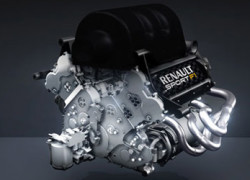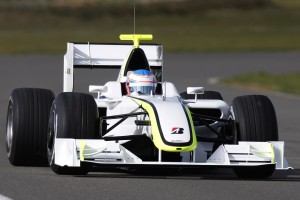
Formula 1 in 2014 is going to be a whole new ball game for the teams and the drivers. There are a whole raft of changes that are going to be made, from the engines to the wings and everywhere in between. There is not much that will stay the same. Let’s take a look at some of the technical changes that will be taking place.
The biggest technical change will be the engines. From next season we will see the debut of 1.6-litre V6 turbo charged engines which will produce about 600 horsepower or roughly around 450 KW. Extra power will be made available through an Energy Recovery System (ERS). This is a big change from the current naturally aspirated 2.4-litre V8 which produces 750 horsepower or roughly 560KW. The maximum revs will also be reduced from 18 000 rpm to 15 000 rpm.
Listen to the Sound of the new Mercedes-Benz V6 turbo engine here.
Or listen to the Sound of Honda’s new 2015 F1 engine here.
The ERS unit will recover energy under braking (as it currently does) as well as the excess heat energy generated by the engine’s turbocharger. The ERS unit, together with the engine, make up the cars power unit. The ERS unit will give the drivers an extra 160 horsepower (+/- 120KW), for 33 seconds a lap as opposed to the current KERS units, which give drivers around 80 horsepower (60KW) for 6 seconds per lap.
The gearbox will now feature eight forward gears, as opposed to the current seven. Teams will need to choose their new gear ratios before the start of the season.
Fuel will be limited to 100kg per race in order to promote fuel efficiency in cars. There is currently no fuel limit, but cars use up about 160kg of fuel per race.
The exhaust outlet for the 2014 cars will be a single exhaust outlet which will be angled 5 degrees upwards at the exit of the pipe. This is to prevent the use of exhaust gasses for gaining aerodynamic benefit.
The height of the nose for cars in 2014 will be lower than it is currently. The maximum height that’s allowed for the nose is 550mm. Next year, this height will be reduced to 185mm. This drastic drop in height will result in cars looking like the F1 cars in the early 90s or more recently the Brawn Mercedes of 2009 with its droopy nose.
The other technical change up front will be to the front wing. The width of the 2014 front wings will be 150mm shorter, or 75mm from either side. Currently, the width of the front wings may not exceed 1800mm. In 2014 the front wing may not exceed 1650mm.
At the back of the car, the beam wing that teams use for extra down force is being outlawed. The main plane of the rear wing will be slightly shallower in length.
The minimum weight for the cars will be raised from 642kg to 690kg to accommodate for the extra weight of the ERS unit.
The greatest technical challenges that teams will run into will be around how to package all the new bits into the car whilst also taking into account the cooling of the much bigger ERS unit. Each team will have their own unique way of packaging the different elements into the cars. This, in itself, brings about quite a few challenges. Because, on the one hand you need things to be easily accessible when the need arises to repair parts, while at the same time you need the tightest packaging possible to ensure that the impact on the aerodynamics of the car is minimal.
2014 will bring teams back on to a level playing field. The team that finds the best package to make everything come together and work perfectly, will undoubtedly win the 2014 Formula 1 Championship.




2 Responses to “Formula 1 in 2014: Technical Changes and Challenges”
Trackbacks/Pingbacks
[…] he turns his thoughts to the 2014 Formula One season discussing the impact of next season’s technical changes and challenges, his approach to design and his massively successful […]
[…] season we will see massive changes in engine and other technical regulations with turbo V6s replacing the V8s and greater emphasis on energy recovery. Allison told the Ferrari […]